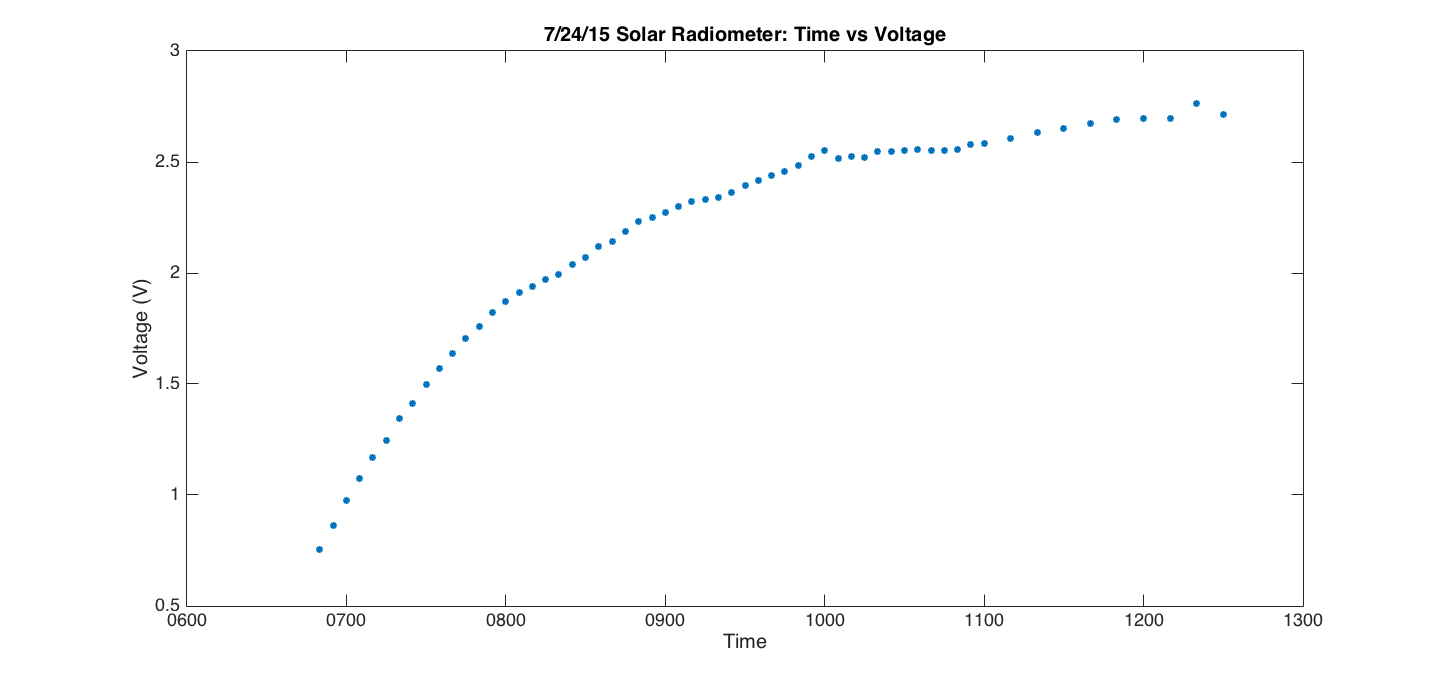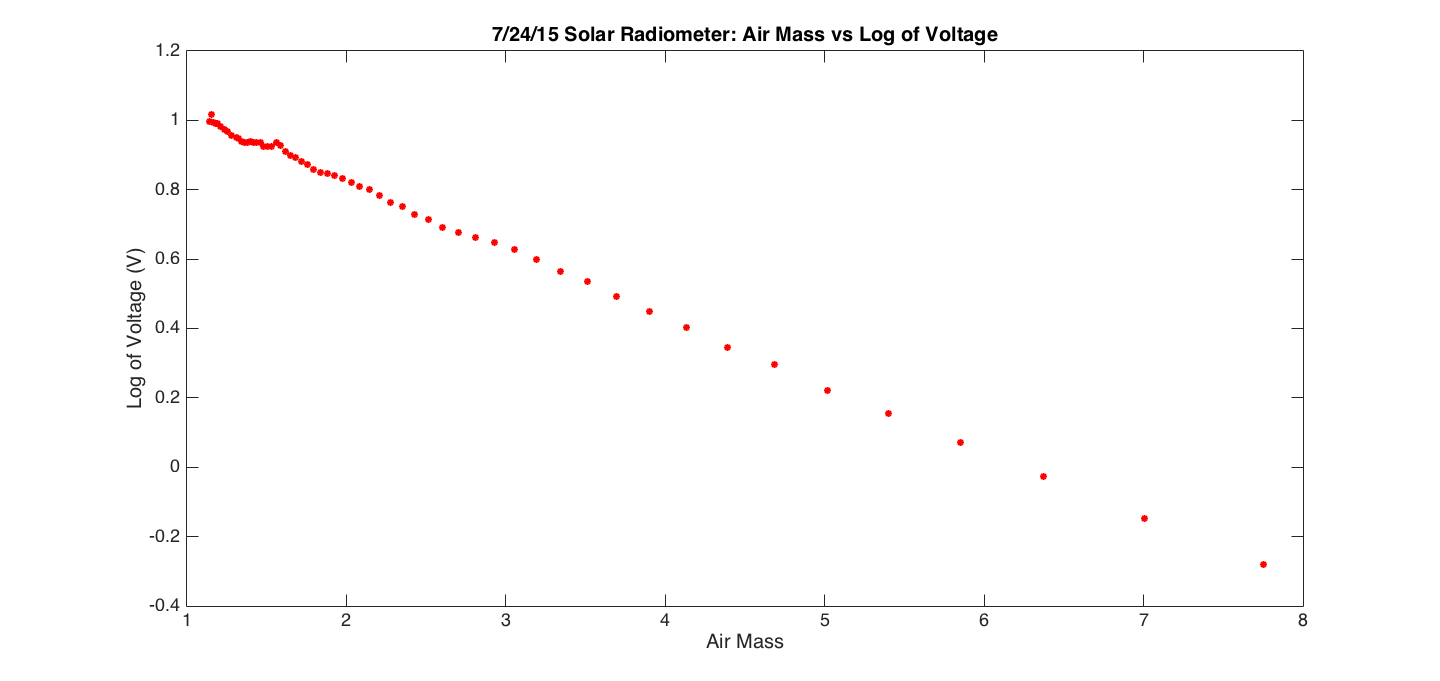Week 9 Log
July 27th - July 31st
This week I contined to concentrate my efforts towards the Spectro-Polarimeter project, particularly in the analysis of measurements taken during the previous week as well as measurements taken this week. I had some disappointing realizations regarding the calibration method using the sun as a source of random polarization.
The video above is a series of 20 measurements taken in a two minute interval with the Spectro-Polarimeter directed at the sun. Since the sun is a source of random polarization, any orientation of the linear polarizer should yield the same result. However, as demonstrated by the video, the instrument response of the Spectro-Polarimeter when using the sun as a calibration source proves to be too inconsistent.
This video corresponds to the same measurements as the previous video, but directly illustrates the changes in instrument response for the 20 measurements.
Despite the challenges associated with using the sun as a calibration source, I continued my analysis and calculations of the Stokes parameters using the calibration data from the integrationg sphere. I sucessfully calculated the Stokes parameters corresponding to measurments taken during this week and the previous. These parameters appear fairly realistic and were calculated from the following equations.
 |
 |
 |
 |
The S3 parameter is conspicuously listed without an equation. This is because the S3 parameter corresponds to circularly polarized light. Since the Spectro-Polarimeter is using a single linear polarizer, we are not able to measure circularly polarized light.
Along with the calculation of the Stokes parameters, I was also able to measure the degree of linear polarization (DoLP). The DoLP is given by the following equation.
 |
While most of this week was directed towards the Spectro-Polarimeter project, I did find time to plot the Solar Radiometer calibration from last Friday.
 |
Voltage detected from the Solar Radiometer corresponds to the following equation.
 |
Where θz is the zenith angle and τ is the zenith optical depth. We can linearize the data when we take the natural log of both sides.
 |
 |